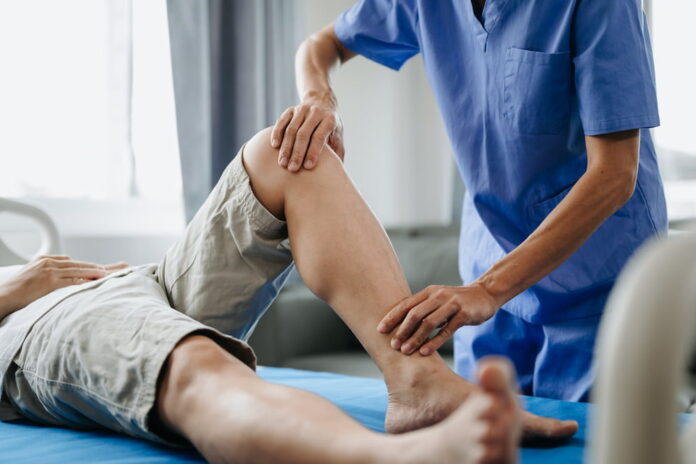Setting the Stage for Spinal Wellness
The spine is your structural command center. Without it, mobility collapses and comfort erodes one vertebra at a time. Modern work habits grind it down: hours hunched at a desk, eyes locked to screens, bodies repeating the same micro-movements until muscles rebel. This chronic strain bleeds into productivity, mood, and energy levels far faster than most realize. Proactive spinal care is not about pampering—it is a strategic investment. You move better, think sharper, and recover quicker. Ignore this and the deterioration will be slow but merciless. Pay attention and you’ll find the spine is your anchor for endurance, both physical and mental, primed for the long haul.
Why Spinal Alignment Impacts Overall Function
Spinal alignment means keeping vertebrae positioned so nerve signals travel cleanly from brain to body. Simple concept, high stakes. Misalignments are silent saboteurs that can spark headaches, drain muscular endurance, and blunt athletic power. This is where chiropractic insight matters, addressing micro-shifts before they spiral into chronic dysfunction. When alignment collapses, so does performance. Treat the core framework, and every system it supports can operate with precision.
Exploring Modern Chiropractic Approaches
Some practitioners lean on Diversified adjustments—precise, manual thrusts restoring joint motion. Others prefer the Activator method, an instrument’s rapid, targeted force. Thompson technique brings specialized drop tables into play for subtle repositioning. Hands-on adjustments offer tactile feedback, while instrument-assisted options can minimize strain for delicate cases. The point is adaptability. A well-trained chiropractor calibrates technique to the patient, body mechanics, and lifestyle demands, not to dogma.
Manual Adjustment Techniques Decoded
Joint mobilization hinges on physics. A quick thrust creates sudden momentum that repositions the joint within its functional range, often unlocking nerve signal bottlenecks. A sustained stretch works differently, easing soft tissue tension through gradual elongation. Both have their place. Neither belongs in the hands of the untrained. Legitimate providers operate under strict credentialing and safety protocols. They deliver calculated, not improvised, forces with respect for the limits of bone and ligament integrity.
Incorporating Spinal Therapy into Daily Routines
Morning and evening moves keep the spine resilient:
• Foam roller mid-back pass to relieve postural tension
• Gentle seated twist to restore rotation
• Posture reset standing tall, chin in, shoulder blades connected
At work, tweak ergonomics: set chair height so knees sit level with hips, adjust keyboard angles to reduce wrist load. Each habit reinforces spinal stability, stretching professional care benefits between visits.
When to Seek Professional Spinal Support
Pain that lingers over two weeks is not a temporary nuisance—it’s a warning. Shooting sensations down limbs, sudden weakness, or a shrinking range of motion all demand attention. If discomfort persists, consult a qualified chiropractor for a comprehensive assessment. Waiting it out or guessing the cause invites the problem to deepen. Early intervention means the difference between a simple correction and a long, grinding recovery.
Preventative Habits for Long-Term Spinal Health
Break posture every 30 to 45 minutes. Hydrate because discs draw moisture to stay pliable. Build core strength to offload spinal strain. Feed the body balanced nutrients to keep tissues repair-ready. Small tracking tools—apps or written logs—turn casual intention into measurable consistency. Prevention is not glamorous, but it’s the work that spares you from chasing solutions later.
Debunking Common Misconceptions about Chiropractic
Myth one: adjustments always hurt. In truth, most are painless or relieve discomfort instantly. Myth two: chiropractic is for athletes only. Office workers and retirees often benefit more due to static posture demands. Myth three: it’s just back cracking. That sound is joint gas release, not the measure of success. The focus is improved motion, better nerve flow, and reduced strain—not theatrics.
Charting Your Path to Lasting Spinal Performance
Daily habits hold the line. Professional care fine-tunes it. Commit to measurable goals: improved bend angles, lower pain ratings, steadier gait. Then maintain them. The spine won’t warn you before decline sets in, but with vigilance and expert input, it will serve you with precision and power for decades. The choice between resilience and regression will always be yours.
If you want to read more articles, visit our blog.
Read Also
- Ketamine-Assisted Therapies: Impacts on Employee WellbeingWorkplace stress is common today. Many employees feel tired, anxious, or burned out. Regular therapy can help, but some people need more support. Ketamine-assisted therapy is showing good results for mental health. A ketamine-assisted therapist guides each session safely. This therapy can improve mood, focus, and energy. Learning more about it can help teams stay… Read more: Ketamine-Assisted Therapies: Impacts on Employee Wellbeing
- The Future of Men’s Health: Why Telehealth Is Here to StayTelehealth isn’t just a pandemic trend that faded into the background. For Australian men, it has become one of the most practical, time-saving, and stress-free ways to manage everyday health — and it’s shaping the future of how we access care. Platforms like DOCTO, an Australian online doctor and specialist telehealth service, are leading the… Read more: The Future of Men’s Health: Why Telehealth Is Here to Stay
- How to Build a Simple, Clean Skincare Routine ?You don’t need a complicated skincare routine. It doesn’t have to be something that requires twenty different products and confusing steps. Your routine works well with just a few high-quality clean ingredients. The beauty industry keeps pushing more products, but your skin actually needs less. You only need a simple approach to get better results… Read more: How to Build a Simple, Clean Skincare Routine ?
- How Preventive Dental Care Supports Overall HealthHave you ever wondered how a simple dental checkup could impact your entire body? Oral health is more than just a bright smile. Studies show that poor dental habits can contribute to serious health problems. Gum disease and tooth decay are linked to heart disease, diabetes, and infections. Yet, many people overlook preventive dental care.… Read more: How Preventive Dental Care Supports Overall Health
- Seeing Clearly in a High-Tech World: A Deep Dive into Advanced Vision Care ServicesProtecting your eyesight isn’t optional—it’s essential. Modern eye care has evolved far beyond basic exams, offering advanced diagnostics, personalized treatments, and surgical innovations that keep vision sharp for life. A leading example is Intermountain Eye Center, home to specialists like Dr Fishburn Boise, where patients receive comprehensive, high-level vision care designed to preserve long-term eye… Read more: Seeing Clearly in a High-Tech World: A Deep Dive into Advanced Vision Care Services
- Why the Keto Diet Works for Some People—and Fails Dramatically for Others: An Ayurvedic Breakdown for Modern HealthcareThe keto diet has dominated weight-loss culture for years. For some people, it produces rapid fat loss, stable energy, and improved mental clarity. For others—especially those who gain weight easily—it leads to burnout, digestive distress, rebound weight gain, high cholesterol, and a metabolism that feels slower than before. Healthcare often frames this as a discipline… Read more: Why the Keto Diet Works for Some People—and Fails Dramatically for Others: An Ayurvedic Breakdown for Modern Healthcare
- How to Choose the Best Assisted Living Facility for SeniorsAre you looking for the right assisted living facility for a senior loved one? Choosing a place can feel overwhelming. There are many factors to consider, from care services to the environment. Safety, comfort, and social opportunities play important roles in daily life. Each senior has unique needs and preferences that must be met. Understanding… Read more: How to Choose the Best Assisted Living Facility for Seniors
- Burn Smart, Not Hard; Shape Burn: Clean Protein for Weight ManagementYou want to feel light, strong, and confident. You don’t want crash diets or fake promises. You need a plan that works with your body, not against it. That’s where Shape Burn comes in. You can burn fat without losing strength. You can eat better and stay full. You can manage weight in a way… Read more: Burn Smart, Not Hard; Shape Burn: Clean Protein for Weight Management









